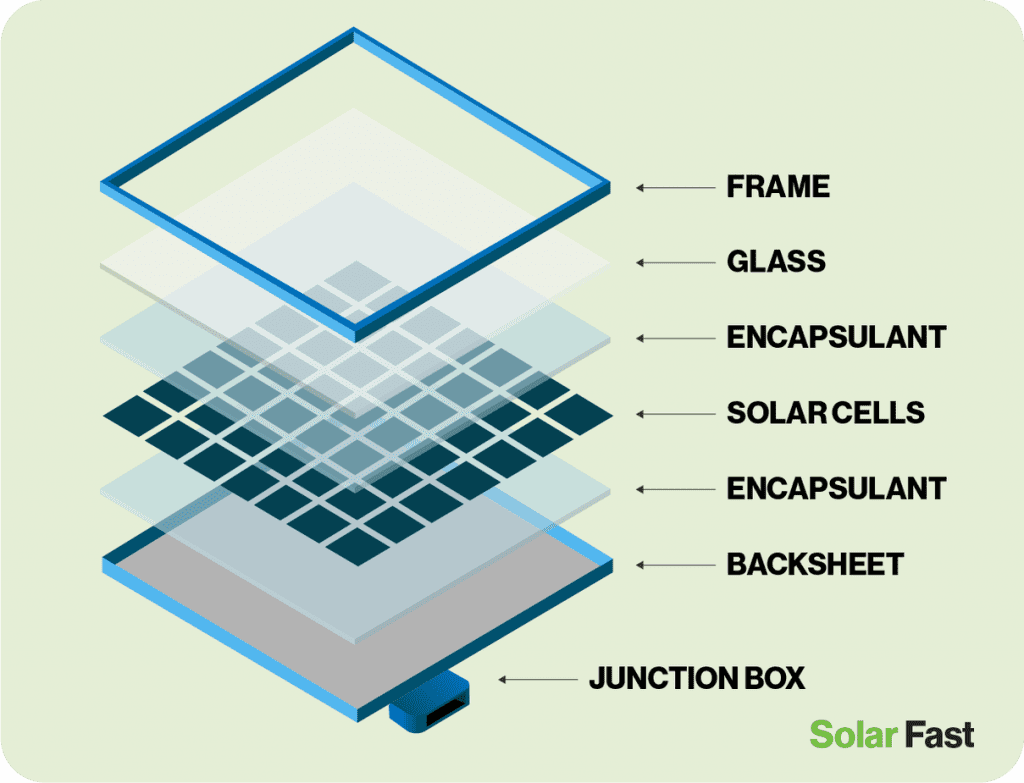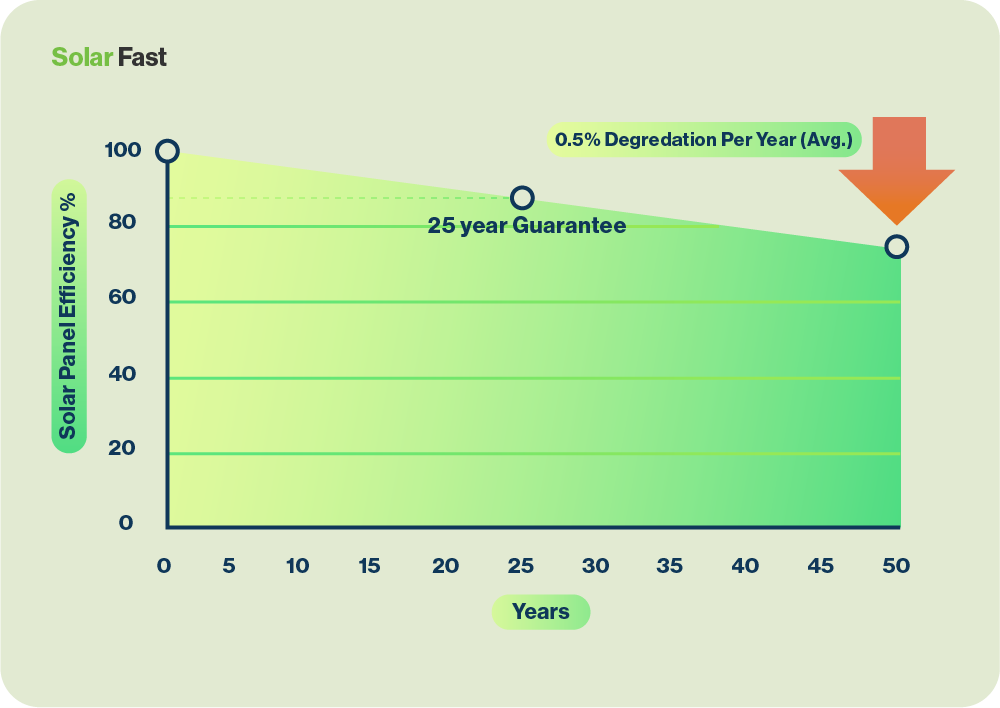The sun is the most powerful source of light in our galaxy and it’s the photons, or light particles, from the sun that give us our solar magic.
Each solar panel is made up of photovoltaic cells that are able to convert that light energy into electrical energy.
To get an idea of how this is achieved, if you can imagine the photons are like tiny balls bombarding a photovoltaic cell, displacing and exciting the electrons within that cell.
This causes the electrons in the negative wafer become ‘excited’ by the photons and start to jump over to the positive wafer, through the tiny wires in the panel.
To ensure this happens, the cell is the sandwich of two semiconductor wafers (n-doped and p-doped).
The electrons over the ‘bandgap’ when hit by photons, which allows them to fill the positively charged holes on the p-junction.
This current is then taken to an inverter to be inverted into AC current.
How does a solar energy system work?
Now you know what you’re looking for, let’s get a little bit more detail on what a full solar system would involve.

- Solar Panels – Photovoltaic panels contain tiny cells that contain electrons that jiggle about and generate electricity when hit by daylight. Most panels contain 60 or 72 cells. However, unlike a lot of solar companies, Solar Fast only installs 108 Half Cell Tier One solar panels – because they are stylish, most efficient and reliable.
- Inverter – Solar panels generate a Direct Current, or DC as it’s known, so we need a device to convert the electricity generated to an Alternating Current (AC) so it can be used in the home. That’s where the inverter comes in because that is exactly what it does. Want to know more about inverters?
- Electricity meter – You obviously already have an electricity meter but it is still part of the system if you are still connected to the grid – which in 99% of cases, you will be.
- Battery storage – The advances in battery technology are coming on in leaps and bounds both in solar systems and electric cars. Advanced Lithium-Ion Batteries are the staple for solar because they are a fantastic way to store your electricity – reliable, long lasting and sustainable.

Do solar panels work on cloudy days?
Absolutely they do!
While strong sunlight is much more effective at jiggling the atoms inside the photovoltaic cells, it’s not necessary for the solar panels to work.
Light is made up of waves and they come in different lengths and colours – from infrared to ultraviolet. Some of these waves can easily pass through clouds to get to your solar panels.
The basic rule is, if you can see your hand in front of you during daylight hours, your solar panels are generating electricity.
Plus, rain is a fantastic natural cleaner for your panels as the water washes any dust away that may be blocking the light getting to the cells.
Learn more about do solar panels work on cloudy days.
Does a solar system work at night?
While the panels are unable to generate electricity at night, systems are able to store electricity in batteries or you can set up a Smart Export Guarantee (SEG), with your energy supplier.
Energy storage used to be a very difficult thing to get right, but the technology has come on so much in the last decade that batteries are reducing in price while increasing in efficiency.
Most standard batteries will happily run the house overnight so long as you aren’t staying up all night cooking and using electric heaters.
Having a battery in your system also cuts your carbon footprint by an average of 0.42 tons a year.
How long do solar panels last?
Most manufacturers guarantee panels for up to 25 years/30 years but they can last for over 4 decades
Panels have no moving parts so any problems will only come from either damage or what is known as degradation – which means that the photovoltaic cells start to ‘wear out’ and become less efficient.
Research from the National Renewable Energy Laboratory in the US has found that solar panels have a median degradation rate of around 0.5% a year. This rate can increase in hotter countries but, here in the UK, we can use this as a pretty good guide.
The panels will be the part of your system that lasts the longest and, it’s worth noting, that they will have paid for themselves after around 5 years.
That means you are getting over 20 years of FREE energy production before you need to think about replacing your panels.
Learn more about how long solar panels last.

How do solar panels work with the grid?
You will only use about 50% of the electricity generated during the hours of sunlight, so it’s a good idea to do something with what is left over.
So, what do you do if you aren’t using battery storage?
Well, as we have previously mentioned, you can also use a net metering agreement or a Smart Export Guarantee (SEG) as they are known in the UK.
In the simplest of terms, this is an agreement you make with an energy supplier to sell them your excess electricity – the money generated from that will go towards paying your supplier for any power you use after sundown or straight into your bank.
It’s always a good idea to research which suppliers are offering the best rates as it will differ from company to company and most will give you a better rate if you are already a customer.







